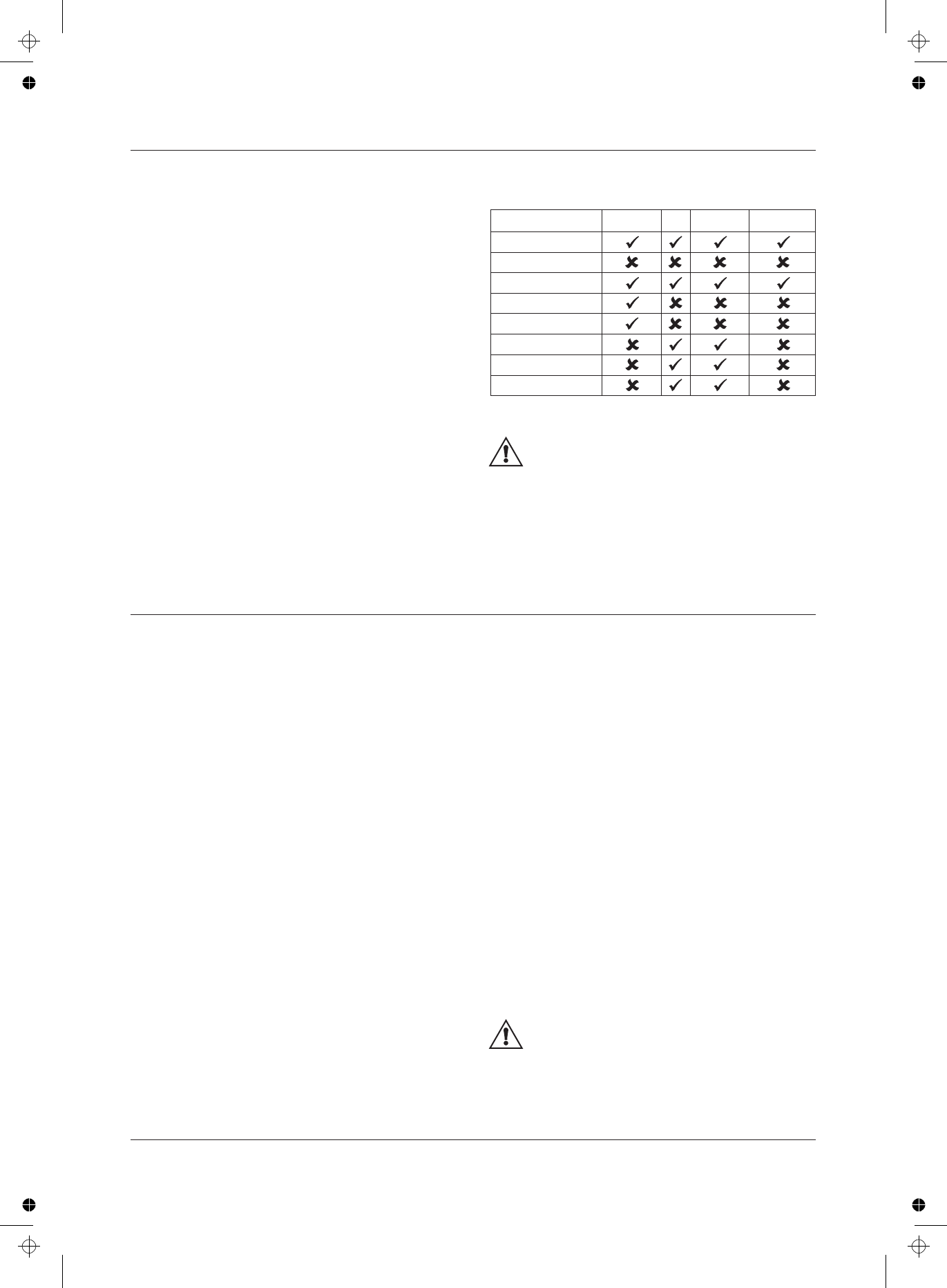
About Your Microwave Oven
Some basic guidelines are given in the table below.
(*Combination refers to microwave + grill and microwave +
Microwave cooking is very quick and efficient. and can also help
convection cooking)
preserve the minerals and vitamins in many foods.
Safety standards
Microwave ovens are covered by a radiation safety standard
which limits the amount of microwaves that can leak from an
oven throughout its lifetime. This is far below the level known to
harm people. The standard requires ovens to have systems that
stop the production of microwaves the moment the latch is
released or the door opened. No radiation remains after
microwave production has ceased.
Radio Interference:
Tesco stores stock a wide range of microwave containers and
wraps designed for microwave ovens.
Plastic films should not touch food as they may gas,
melt or break down when hot and contaminate food.
Suitable and unsuitable containers:
Wax paper, oven cooking bags, parchment paper and white
Generally speaking, cooking containers made from porcelain, glass and
microwave paper towels are safe for microwave use. Wooden
plastic can be penetrated by microwaves. Use heat resistant porcelain,
objects may catch fire - so avoid their use.
glass or plastic containers made for microwave ovens, otherwise
Go not use aluminium foil unless the recipe specifically requires
there is a risk of shrinking, deforming or burning. Metal containers,
its use. Remove metal skewers, ties, etc. from food before
or containers having metal decoration or trim are not suitable.
cooking.
When you are combination cooking, the container must be fully
Avoid containers which narrow at the top as these may cause the
heatproof as well as suitable for microwave cooking.
contents to erupt when removed from the oven.
Operation of the microwave oven can cause interference to your
radio, TV or similar equipment. When there is interference, it may
be reduced or eliminated by taking the following measures:
$ Clean the door and sealing surface of the oven.
$ Reorient the receiving antenna of radio or television.
$ Relocate the microwave oven with respect to the receiver.
$ Move the microwave oven away from the receiver.
Cookware
Heat–Resistant Glass
Non Heat–Resistant Glass
Heat–Resistant Ceramics
Microwave–Safe Plastics
Kitchen Paper
Metal Trays / Metal Racks
Aluminium Foil
Metal Foil Containers
Microwave Grill Convection Combination*
$ About 20% of the cooking takes place after the oven turns off
Cooking In your Oven
so your food will continue cooking after you've removed it.
Your oven can carry out a number of cooking processes.
$ Food that takes an hour in to cook in a regular oven should
$ Basic Microwave Cooking
take around15 minutes in the microwave.
$ Basic Grilling
$ Foods such as cakes with baking powder should stand a few
$ Convection Cooking ( standard convection oven)
minutes before cooking to allow the leavening agents to work.
$ Microwave/Grill combination cooking
$ If a recipe calls for milk and water, reduce the water.
$ Microwave/Convection combination cooking
$ Stir liquids and purees before during and after cooking.
In these last two processes, food is partially cooked by microwaves
$ Rotate large items of food occasionally during cooking to
and then finished by either grilling or oven cooking. This accelerates
encourage even heat distribution.
the cooking process whilst maintaining the finish and texture of
$ Food cooks better in a dish with round or curved sides.
traditionally cooked foods. A programme is availablethat enables
$ Salt attracts microwaves. Don't just sprinkle it on food before
you to defrost frozen food and then combination cook it thus
cooking, stir it in or add it later.
completing the entire cooking process in one operation.
$ Fats and sugars attract microwaves - thoroughly mix sugar
Preset cooking programmes
with other ingredients. Take care when cooking foods with
high sugar or fat contents as they can reach very high
temperatures.
$ Handle pastry-wrapped foods like mince pies carefully as the
filling gets hotter than the pastry.
Prepackaged Food
$ Most packaged foods suitable for microwaving are marked
Tips for good microwave cooking
with the microwave symbol and instructions for heating.
Always follow the guidelines when microwaving packaged
Arrange food in the dish so that the thicker part is on the outside
foods.
and the thinner part inside for more even cooking. Fold under the
thin edges of fish fillets and other tapered foods. Where it is
Always follow the advice in the Safety Guide on Page 2
possible to control the shape, e.g. by tying a meat roast into a
for safe, effective cooking procedures.
cylinder, more uniform results will be obtained.
$ 5-6 minutes per 500 g. will cook most diced foods including
fruit and vegetables. Seafood takes less time.
$ Different foods require different temperatures to cook
properly. Add more minutes as you drop the power.
Your oven has 8 preset programmes. These programmes allow
you to automate the cooking of a range of standard foods for
greater convenience. Some programmes use one cooking
method, others use combination cooking. So you can just select
the programme, dial in the amount of food you want to cook and
the oven will do the rest!
Page 3














